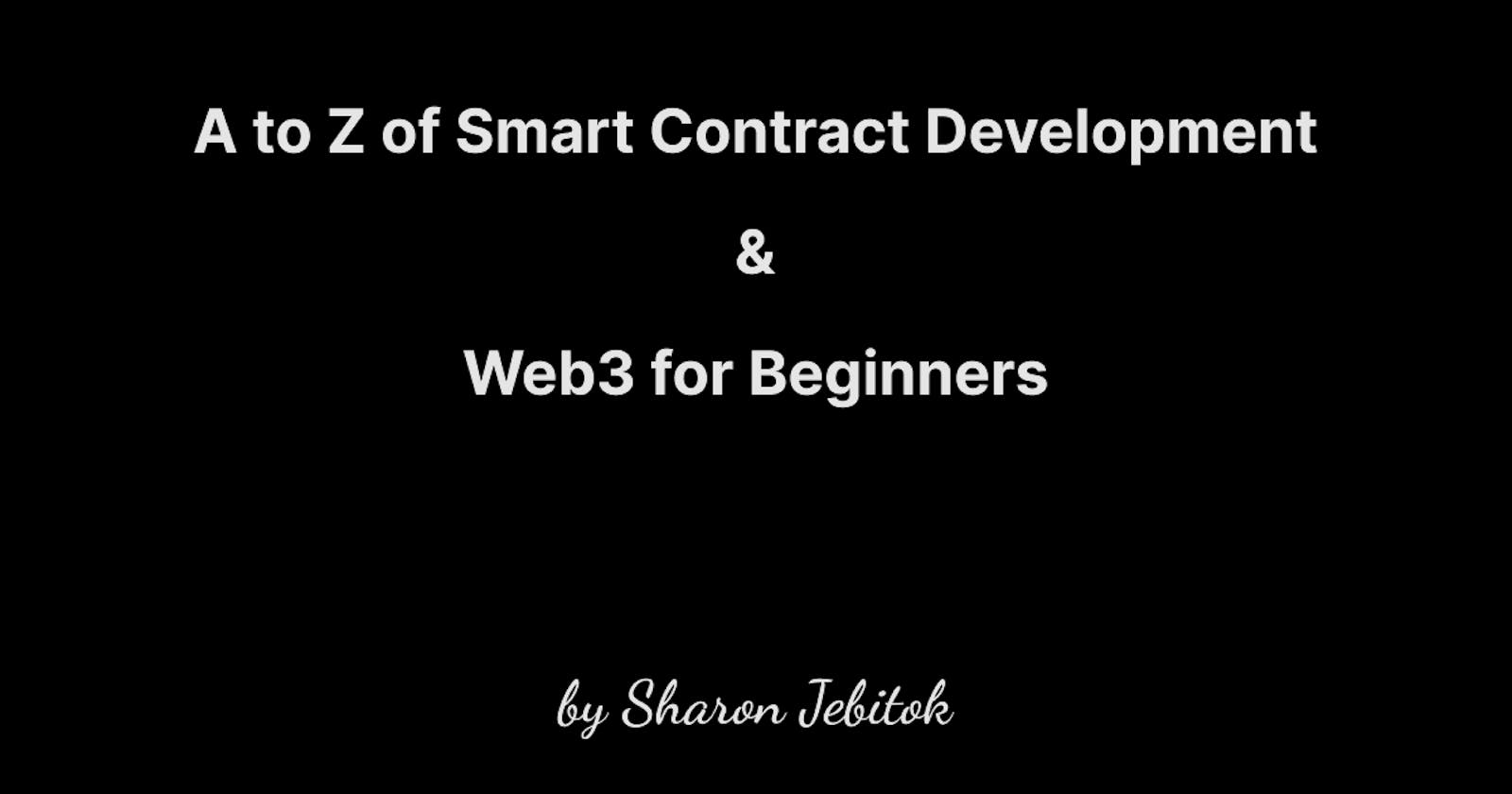At the moment there are a good number of courses for blockchain development. It might be hard to pick the right one or the one that is affordable to you since a couple of courses or programs are so expensive. The good thing is that there are a good number of experts, Bootcamps, and communities in the Web3 space that are continuously creating quality content that is absolutely free or affordable for newbies.
Secondly, there are blockchain technologies that support turning-complete smart contracts like Ethereum and Solana among others. With these networks, smart contract developers can write, and deploy small programs i.e smart contracts. Developers interested in smart contract development have to pick the network they want to build smart contracts on since there are many networks and the smart contract development language differs depending on the network they’ll be building on like Ethereum network commonly uses Solidity and Solana uses Rust.
This article will focus more on solidity and smart contract development on the Ethereum blockchain as it's used on Ethereum and EVM(Ethereum Virtual Machine) compatible networks like Polygon, Binance Chain, Celo, Avalanche, Fantom Opera, Cronos, Arbitrum, Aurora, Harmony, Gnosis Chain, Moonriver, Emerald Paratime, Telos, KCC, GoChain among others.
To get started with smart contract development in Ethereum blockchain you’ll need to identify the roadmap you want to follow, and resource(s) to use while learning.
Resources & BootCamps
You can get the resources via:
- the documentation like solidity and the blockchain networks that you’re going to build on. Most documents are well documented and offer better details on how you’ll build as:
- blockchain is still new and could have fewer tutorials online
- blockchain networks hire developer advocates or technical writers who write quality and updated tutorials
- docs undergo reviews and the developers who constantly use them give feedback or raise issues as they’re open-source on improvements that can be made or features that can be added
- docs are verified and come in handy when you’re unsure of a tutorial or you find one misleading or harder to understand
- DAOs and communities that are focused on WEB3 education for example the Learn Web3 DAO, Developer DAO, Web3Ladies, Web3 Afrika, Graph Academy, and Encode Club, among others.
- Web3 Bootcamp training: Web3Bridge, Consensys Academy, EatTheBlocks, rsk Academy, BlockDevsUnited - L_EARN
- Tutorials and YouTube Channels: Smart Contract Programmer - YouTube, Solidity Patterns, Solidity By Example, Eat The Blocks
- Challenges: Speed Run Ethereum by Austin Griffin, Moralis, BuildSpace, Crypto Zombies, Alchemy: Web3 Weekly
Learning Path
- starts with understanding:
- blockchain technology: its features and characteristics, its relation to real-life, cryptographic hashes, main use-cases i.e cryptocurrencies especially Bitcoin and Ethereum, Decentralized finance, Metaverse, and NFTs, among others. You can read it in detail here.
- Ethereum blockchain: Ether, addresses, wallets, fields, and lifecycle of transactions, smart contracts, gas, types and fields accounts, and networks.
- smart-contract development:
- Solidity basics: you can get started by using solidity docs, the solidity-by-example site, the resource or program you’re learning from
- Writing, testing, compiling and deploying smart contracts like ERC20 tokens, ERC721 NFT
- Libraries and Frameworks: Open-Zeppelin, Diamond Standard,
- Smart contract development environments: like Hardhat, Truffle, or Foundry to write, test, compile, and deploy the smart contracts.
- RPC providers like Alchemy, Moralis, and OpenZeppelin’s Defender Relay alongside your address secret key from Metamask while setting up the config files that you’ll use while hard-forking or deploying your contracts to Testnet or Mainnet of given blockchain networks like:
- Ethereum Network(main-net or test-net like Rinkbey)
- Polygon Network(main-net or test-net like Mumbai)
- Binance Chain Network
- Ether.js library and Metamask’s Ethereum Provider to integrate your smart contract to the frontend that you can build using React.js or Python framework or HTML & CSS.
- Data storage like IPFS and Arweave for adding Metadata to your ERC721 NFTs when minting and publishing them to OpenSea
- Smart contract review: other contracts
- Smart contract audit
Experience
You can gain experience as a smart contract or web3 developer by:
- participating in hackathons
- contributing to DAOs
- Contributing to open-source projects: creating issues or working on issues on their GitHub repositories
- Speaking at events
- Creating technical content: blogs, articles, tweets, or videos
- Building a network
- auditing smart contracts and writing smart contract reviews
Job Search and Applications
Before you start a job search/applications and prepare for interviews you need to work on your Resume, Github Profile, and Portfolio(especially if you’re focusing on Frontend or full-stack web3 roles you can add some dApp projects on the portfolio), visibility on LinkedIn profile, Twitter and Discord or Telegram accounts.
You can look for jobs on the following job boards, pallets, and communities, especially on DAO discord channels that have jobs sections, and career sections of individual sites of blockchain projects. Here are a number of job boards that post web3-related jobs.
- ankr
- Web3 Career
- cryptojoblists
- camp3 co
- learnweb3 info
- remote3 co
- crypto jobs
- froog
- pompcrytojobs
- Samina’s Job Board
- Shefi
Resources for preparing for Web3 or Solidity Interview
- Top solidity interview questions and answers - Turing
- 100 solidity job interview questions and answers whose difficulties range from easy, intermediate, and difficult - EatTheBlocks
- Top 30 interview questions for Ethereum & smart contracts - Blockchain Council
- If you’re applying for a role that requires a full-stack smart contract developer or smart contract/Javascript/Typescript developer you would need to prepare for the Web2 stack like Javascript interview questions, DevOps interview questions, or backend e.g Nodejs/Go or Python interview questions
Thank you for reading through my article you leave a comment or a suggestion. We can also connect more on Twitter or LinkedIn

